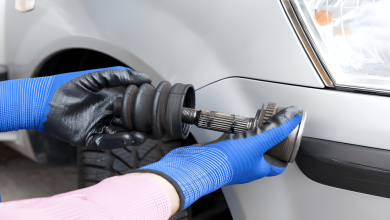
Understanding Paint Protection Films (PPF)
Paint Protection Film (PPF) is a revolutionary solution designed to safeguard a vehicle’s exterior from damage caused by road debris, environmental contaminants, and daily wear and tear. This thin, invisible layer of protection offers numerous advantages that help maintain a car’s pristine appearance and resale value.
1. What is Paint Protection Film (PPF)?
PPF is a thermoplastic urethane film that is applied to the exterior surfaces of a vehicle to provide a protective barrier against various forms of damage. It is highly flexible and resistant to impact, making it ideal for shielding the paintwork from scratches, rock chips, and abrasions.
2. Benefits of Paint Protection Film
- Scratch and Chip Resistance: PPF acts as a shield against minor abrasions and flying debris, keeping the paint intact and scratch-free.
- UV Protection: The film helps block harmful UV rays that can cause fading and oxidation of the vehicle’s paint.
- Self-Healing Properties: Some high-quality PPF options come with self-healing properties that allow minor scratches to disappear with exposure to heat.
- Enhanced Aesthetic Appeal: PPF maintains the original shine and color of the vehicle, preventing discoloration and maintaining a glossy finish.
- Long-Term Cost Savings: By protecting the paintwork, PPF helps avoid costly repainting and refinishing jobs.
3. Types of Paint Protection Film
There are several types of PPF available in the market, including:
- Glossy Finish PPF: Enhances the car’s shine and blends seamlessly with the factory paint.
- Matte Finish PPF: Offers a unique satin appearance while providing the same level of protection.
- Custom Cut PPF: Precisely tailored to fit specific parts of the vehicle, such as the hood, bumpers, and mirrors.
4. The Application Process
The installation of PPF requires professional expertise to ensure a flawless finish and maximum coverage. The process typically involves:
- Surface Preparation: The vehicle’s surface is thoroughly cleaned and decontaminated to remove any dirt or imperfections.
- Film Application: The PPF is carefully applied using specialized tools to achieve a bubble-free and seamless fit.
- Curing: The film is allowed to settle and bond to the surface, ensuring long-lasting protection.
5. Choosing the Right PPF for Your Car
When selecting PPF, it’s essential to consider factors such as durability, warranty, and maintenance requirements. High-quality brands offer better longevity and performance, ensuring that your investment is well-protected.
6. Complementary Protection with Window Tints
To achieve comprehensive vehicle protection, combining PPF with high-quality window tints can be an excellent choice. For instance, TechTeinte 3M safety window tints not only enhance privacy but also provide UV protection and heat reduction, creating a more comfortable driving experience.
Conclusion
Understanding Paint Protection Film is crucial for any car owner looking to maintain their vehicle’s aesthetic appeal and long-term value. With its ability to protect against physical and environmental damage, PPF is a wise investment for those who want to keep their cars looking new for years to come. Whether you prioritize scratch resistance, UV protection, or aesthetic enhancement, PPF offers a reliable solution tailored to your needs.




